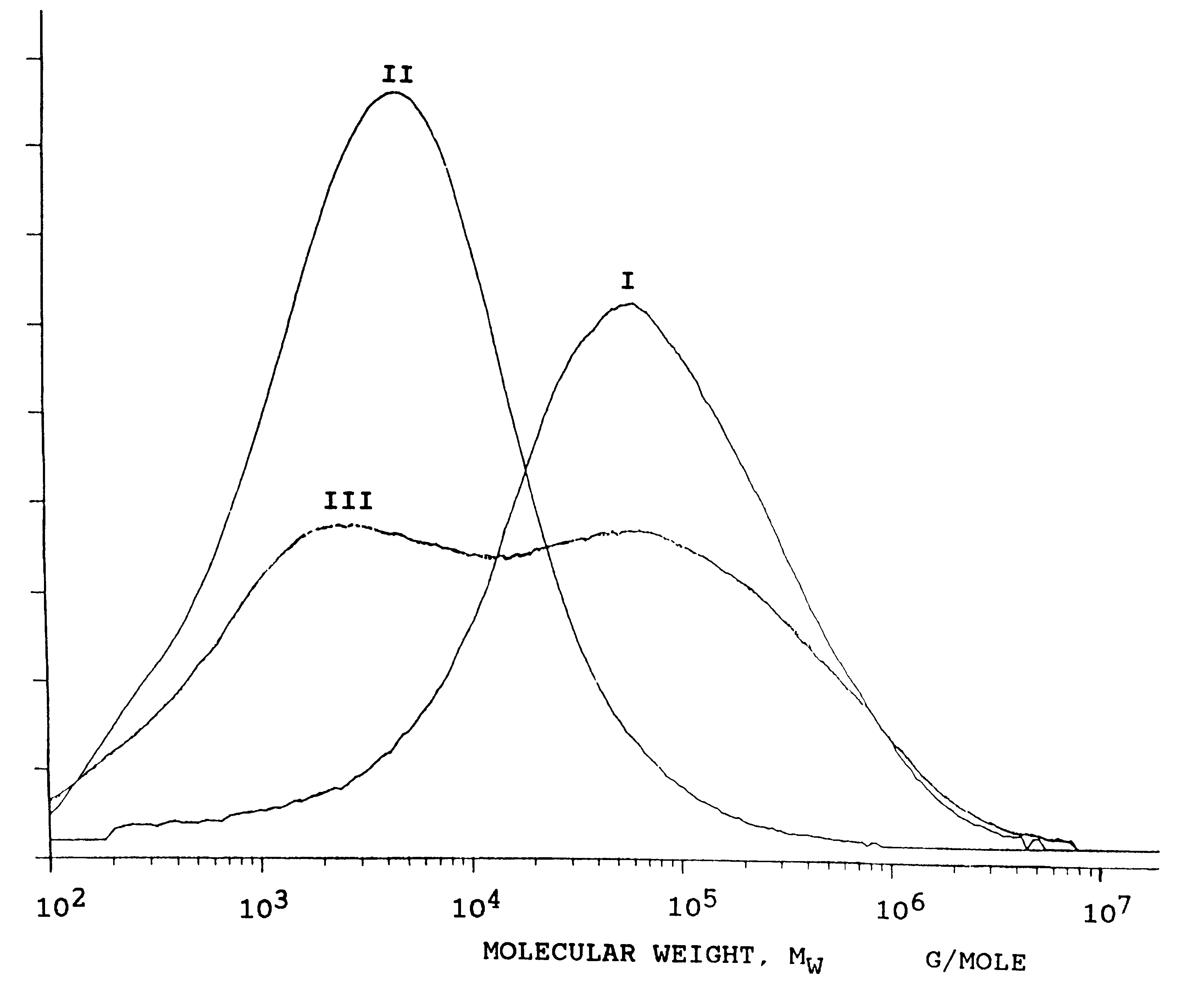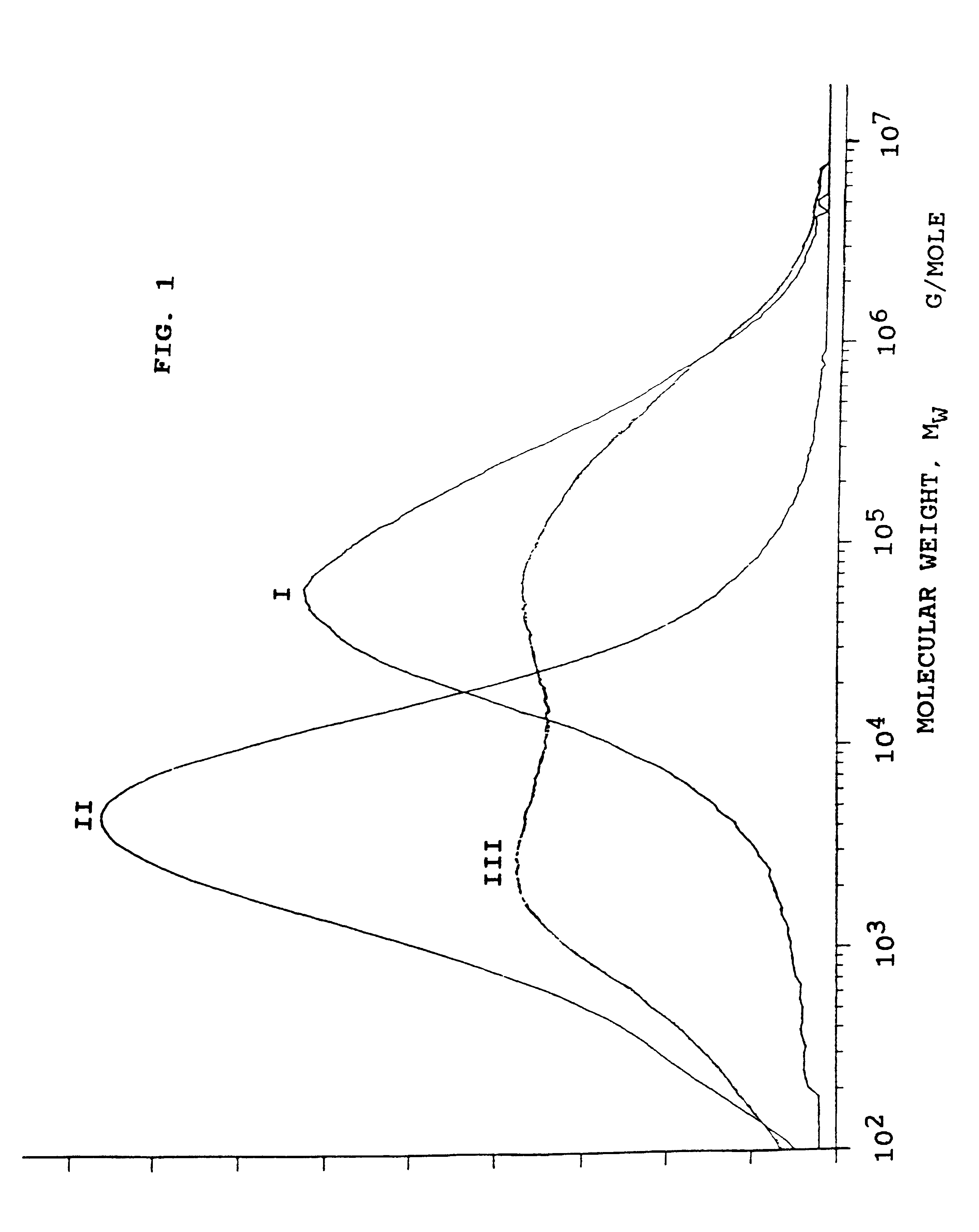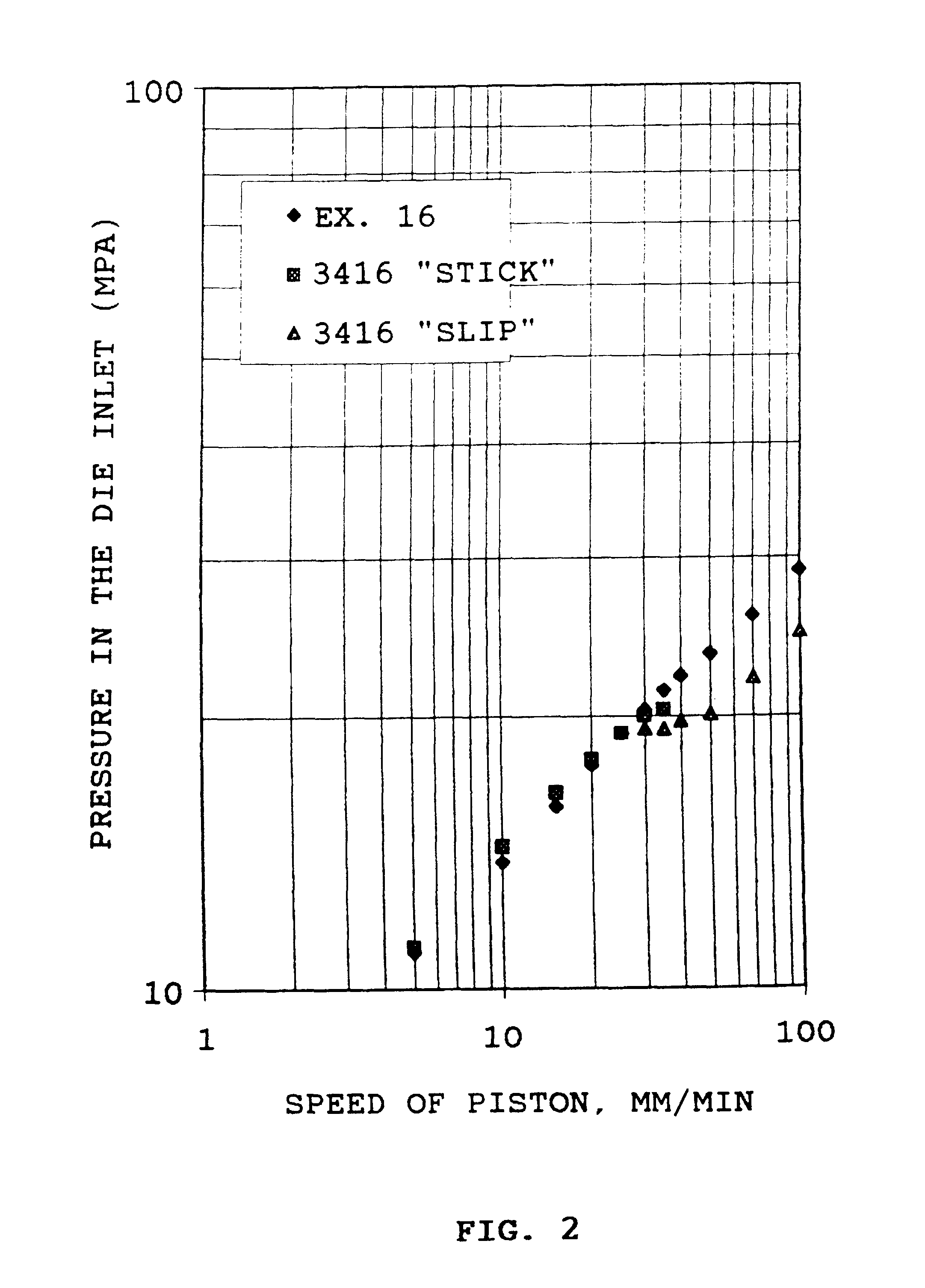Process for producing polyethylenes having a broad molecular weight distribution, and a catalyst system used thereby
a technology of molecular weight distribution and catalyst system, which is applied in the direction of catalyst activation/preparation, physical/chemical process catalysts, chemical/physical processes, etc., can solve the problems of narrow molecular weight distribution of obtained polymers, difficult control of molecular weight, and defect in extrusion
- Summary
- Abstract
- Description
- Claims
- Application Information
AI Technical Summary
Problems solved by technology
Method used
Image
Examples
examples 1 to 3
Polymerizations were performed with catalyst A (Comparative Example 1); catalyst B (Comparative Example 2); and a mixture of 60% by weight of catalyst A and 40% by weight of catalyst B (Example 3). Catalysts A and B were prepared as follows:
Catalyst A
A silica support with 1% by weight of deposited chromium (of type "Crosfield EP 30", commercially available from Crosfield Silicas, Warrington, UK) was at fluidizing conditions activated in a stream of dry air at 900.degree. C. for 6 hours, then subjected to reduction for 4 h at 380.degree. C. in nitrogen containing 5% by volume of CO, and then kept in an inert environment.
Catalyst B
A silica support (of type "Grace 955 W" from company Grace GmbH, Worms, Germany) was calcined at 800.degree. C. in a stream of dry air and then kept in an inert environment. In a stainless steal reactor provided with a stirrer 780 g of the thus calcined silica support together with 3000 ml isopentane were introduced. The mixture was suspended and heated to 4...
examples 4 to 7
These examples show that a non-reduced catalyst A used together with catalyst B will result in a catalyst system having a considerable lower activity than the catalyst system of the invention.
Catalysts A and B, as well as the polymerization conditions, were the same as those used in Examples 1 to 3, except:
Catalyst A was activated at 750.degree. C., and a part of the obtained catalyst was not subjected to reduction with CO (i.e. Cr had an oxidation number of mainly 6+instead of 2+).
Polymerizations were performed using catalyst A in a reduced form alone (Comparative Example 4), and in an unreduced form alone (Comparative Example 5), and catalysts A and B together with catalyst A in a reduced form (Example 6) and with catalyst A in an unreduced form (Comparative Example 7).
The results are presented in Table 3. The results show that the polymer yields are about the same when catalyst A is used alone in a reduced form and in an unreduced form. When using the catalyst system according to...
examples 8 to 12
Polymerizations were performed at the same conditions as those of Examples 1 to 3, except that the amount of hexene was 5 ml and that hydrogen was fed to a pressure of 250 kPa and ethylene then fed to a pressure of 3550 kPa(e), and the catalysts A and B were used together in a ratio of from 45:55 to 60:40. Catalyst A was identical to the one used in Example 1, except that it had now been activated at 715.degree. C. for 8 hours (instead of being activated at 900.degree. C. for 6 hours). Catalyst B was identical to the one used in Example 2. In Examples 10 to 12 also TEAL was added, as a cocatalyst. In Example 10 TEAL dissolved in heptane was deposited on catalyst A in a quantity corresponding to a molar ratio of TEAL / Cr=0.5. In Example 11 TEAL was added to catalyst B, which had been impregnated with bis-cyclopentadienyl chromium, in a quantity corresponding to a molar ratio of TEAL / Cr=0.5. In Example 12 TEAL was introduced directly into the reactor in a molar ratio of TEAL / (total amo...
PUM
| Property | Measurement | Unit |
|---|---|---|
| temperature | aaaaa | aaaaa |
| polydispersity | aaaaa | aaaaa |
| melt viscosity | aaaaa | aaaaa |
Abstract
Description
Claims
Application Information
 Login to View More
Login to View More - R&D
- Intellectual Property
- Life Sciences
- Materials
- Tech Scout
- Unparalleled Data Quality
- Higher Quality Content
- 60% Fewer Hallucinations
Browse by: Latest US Patents, China's latest patents, Technical Efficacy Thesaurus, Application Domain, Technology Topic, Popular Technical Reports.
© 2025 PatSnap. All rights reserved.Legal|Privacy policy|Modern Slavery Act Transparency Statement|Sitemap|About US| Contact US: help@patsnap.com



